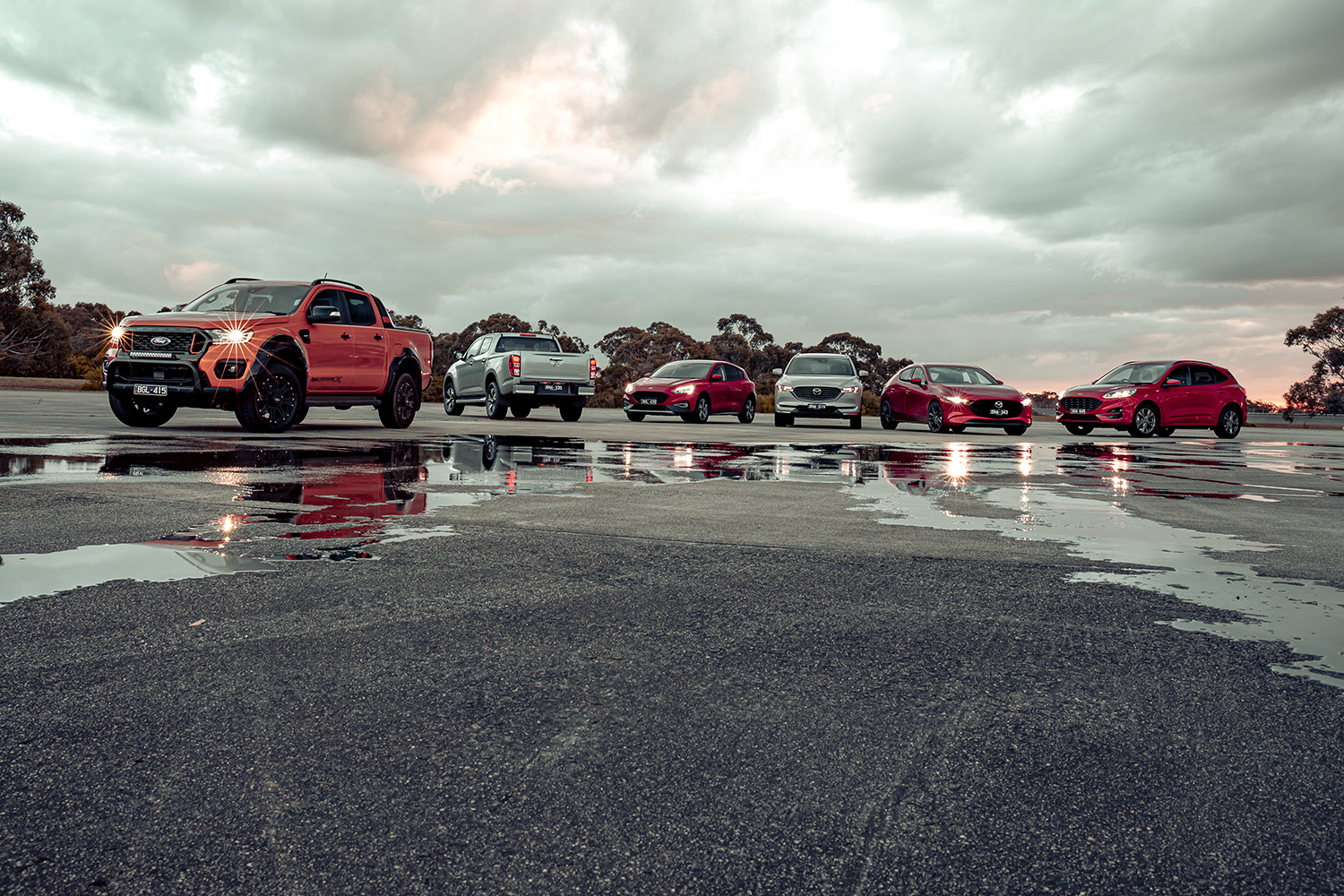The current Australian motoring landscape is radically different to the one you and I grew up with. This statement is verging on painfully obvious, but it might surprise you just how quickly and how radically change has occurred.
Twenty years ago, buyers made very simple choices. Small families bought small cars and large families bought large cars, the two categories accounting for 21 per cent and 24.6 per cent of the Australian market respectively in 2001.
SUVs were in their infancy – so much so that they didn’t even have their own section in the VFACTS sales data, instead being lumped in with ‘Light Trucks’. ‘All Terrain Wagons’, as they were then known, incorporated everything from a Honda HR-V to a Range Rover and accounted for just 15 per cent of sales – and to be honest a lot of those were the Toyota Landcruiser and Nissan Patrol.
Dual-cab utes were of limited appeal, finding favour with just 4.5 per cent of buyers, mostly primary producers or off-road enthusiasts.
Today’s figures illustrate just how far the market has shifted. SUVs of various shapes and sizes accounted for 49.6 per cent of sales in 2020 – or basically one in every two vehicles – while dual-cab demand has almost quadrupled to 16.7 per cent.
Small-car sales have dried up to just 13.2 per cent of the market, but what of large cars, the dominant player of 20 years ago? In 2020 they accounted for just 0.6 per cent of sales.
Actually, the news is worse than that, as today’s large-car figures include prestige offerings like the BMW 5 Series and Mercedes-Benz E-Class. Limit it to the traditional $70K cut-off and the figure is just 0.3 per cent.
If all those figures are making your head spin, look at it like this: in 2001 for every 1000 cars sold, 246 were large sedans; in 2020, that number is three.
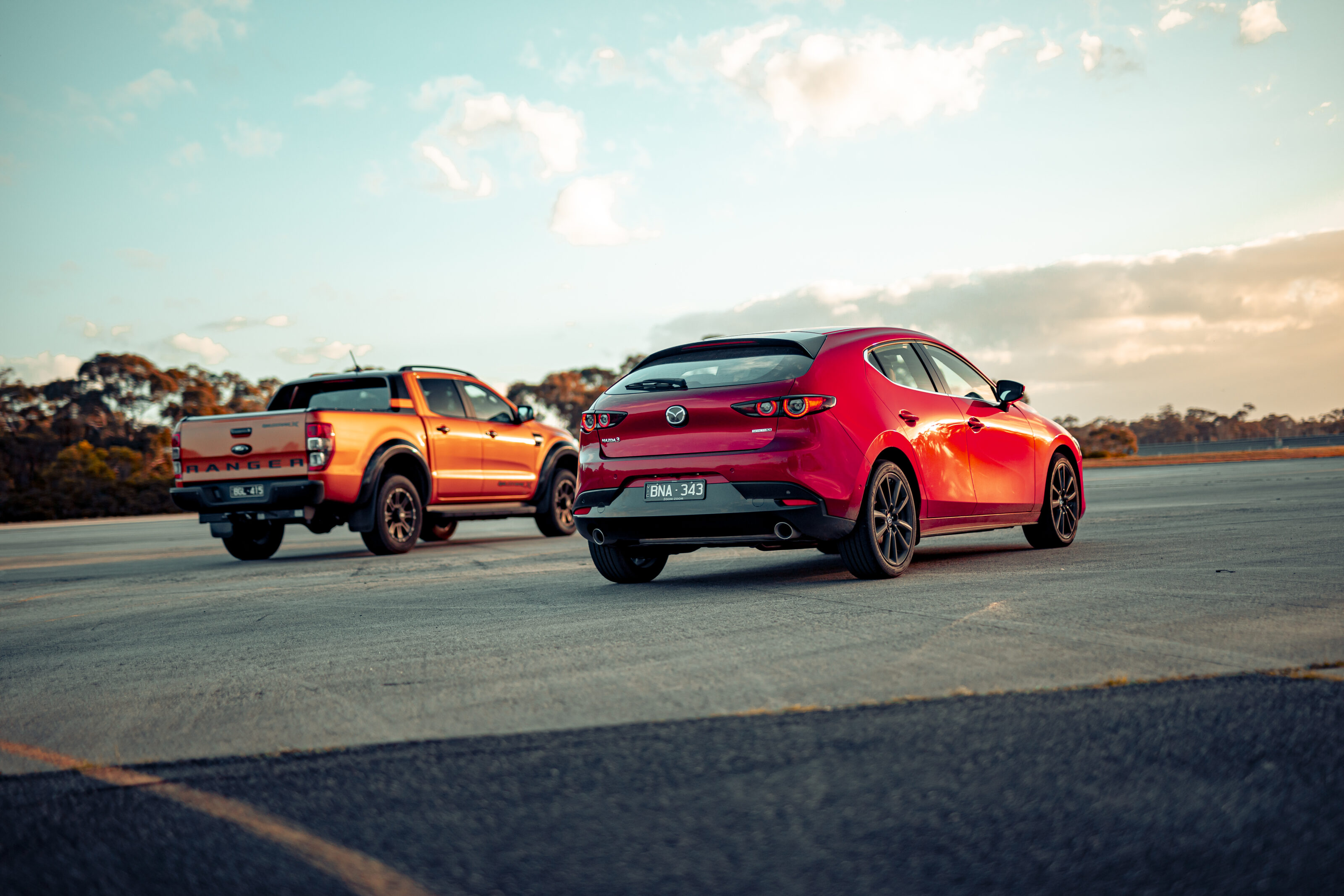
With Australian families now overwhelmingly favouring SUVs and dual-cab utes, the question we seek to answer is whether driving habits need to change to suit. With both these vehicle segments typified by substantial kerb weights and higher centres of gravity, do buyers need to be aware of dynamic compromises? Or does the latest chassis, tyre and electronic technology render that argument redundant?
To find out we gathered six cars from a variety of vehicle categories and employed the services of the Vinfast vehicle engineering team to put each through a series of tests to examine their dynamic capabilities. The Vinfast team’s knowledge, experience and equipment ensured the data was scientifically accurate and carried out to the correct standards, allowing Wheels to simply report the results.
Representing small cars and acting as a dynamic benchmark are the Mazda 3 X20 Astina hatch and Ford Focus Active. For SUVs we have the mid-size Ford Escape ST-Line and seven-seat Mazda CX-8 – actually, six-seat in the case of this range-topping Asaki LE. Last but not least is a pair of dual-cabs, the Mazda BT-50 GT and Ford Ranger Wildtrak.
Regardless of the results, in no way is this article intended to influence purchasing decisions – consumers should buy the vehicle that best suits their needs. However, it’s important to recognise that choosing a certain sort of vehicle may require some adjustment or compromise in terms of driving dynamics.
Braking
Surprising results when our field really threw out the anchors
Two braking tests were performed, both from 100km/h to zero, one in the dry and one in the wet. While all stops were conducted in the same locations, to account for any surface inconsistencies a number of runs were completed (either four or five, depending on the consistency of the results) with the best and worst results deleted and the remainder averaged. Between each stop, the brakes were cooled to eliminate fade as a variable.
The Mazda 3 stopped in 39.8m in the dry, the testing notes stating that it was “definitely getting the most out of its tyres as it was moving around ever so slightly resulting in some yaw deviation”. Translation? It was getting a bit squirmy. This figure increased to 50.8m in the wet, providing us with our first important data point. Even a modern vehicle on new tyres takes 11m longer – or two-and-a-half car lengths – to stop in the wet than the dry.
Ford’s higher-riding hatchback, the Focus Active, was slightly worse in the dry at 40.3m but impressive in the wet, its 47.4m result the class of the field. Despite carrying an extra 562kg, the Mazda CX-8 recorded similar figures at 41.5m dry and 48.2m wet, suggesting tyre type/condition and ABS calibration are more important than vehicle size and weight.
Backing up this hypothesis was the excellent performance of the Ford Escape. Its 38.5m dry stop was not only the best recorded but its consistency impressed, too, the best and worst results separated by just 30cm. The testing notes backed up the data: “Rock solid performance, excellent stability and stopping power. The ABS felt really well controlled.” The Escape was equally capable in the wet, recording 47.8m, the notes again complimentary: “Really solid and consistent stopping distance and stability under braking”.
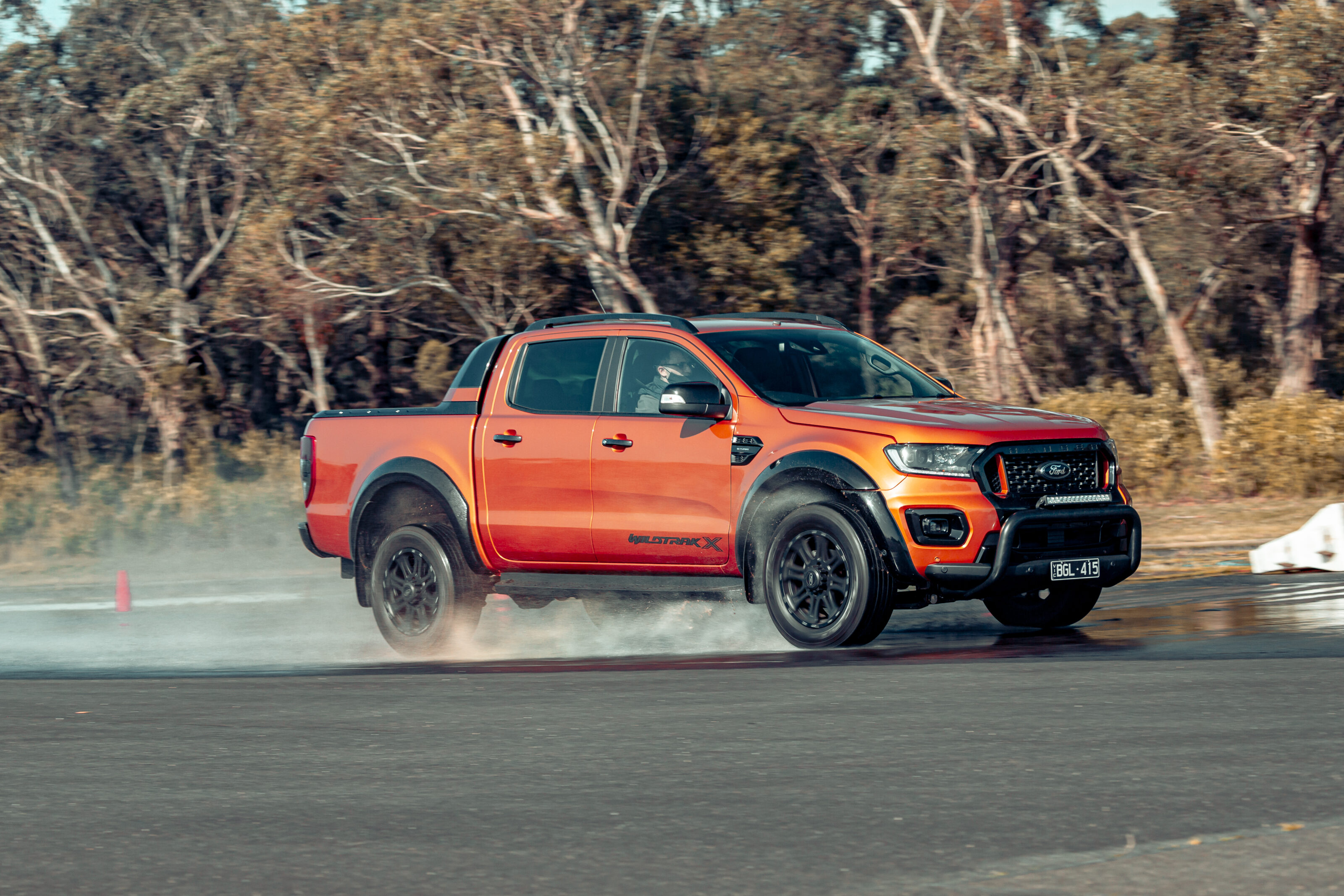
First of the dual-cabs was the Mazda BT-50 GT, taking 43.3m to stop in the dry and 52.9m in the wet. While these were the longest distances thus far, the testing notes were positive: “Very good stopping distance/consistent performance for a pick-up. Does not have the ‘sail on’ feeling as it controls corner pressure under ABS”.
Of all the vehicles the Ford Ranger struggled the most with the braking tests. While its 44.2m dry stop was in the ballpark, its wet result blew out to 57.8m, the testing notes explaining: “The Ranger found it difficult to cope with the patchy wet asphalt with the ABS releasing the corner pressures, resulting in a ‘sail on’ feeling which showed in the long wet stopping distance. The inconsistent performance also showed in the variation of the results”. The Ranger’s best wet braking result of 54.1m was similar to that of the BT-50, but it also recorded two distances of 60.1 and 60.2m, a dramatic difference.
What does this data mean? If we examine the difference in stopping power between the best-performing (Ford Escape) and worst-performing (Ford Ranger) vehicle, then at the point the Escape has come to a halt, the Ranger is still travelling at 35.9km/h in the dry and 41.6km/h in the wet. That’s fast enough to have serious consequences in the real world.
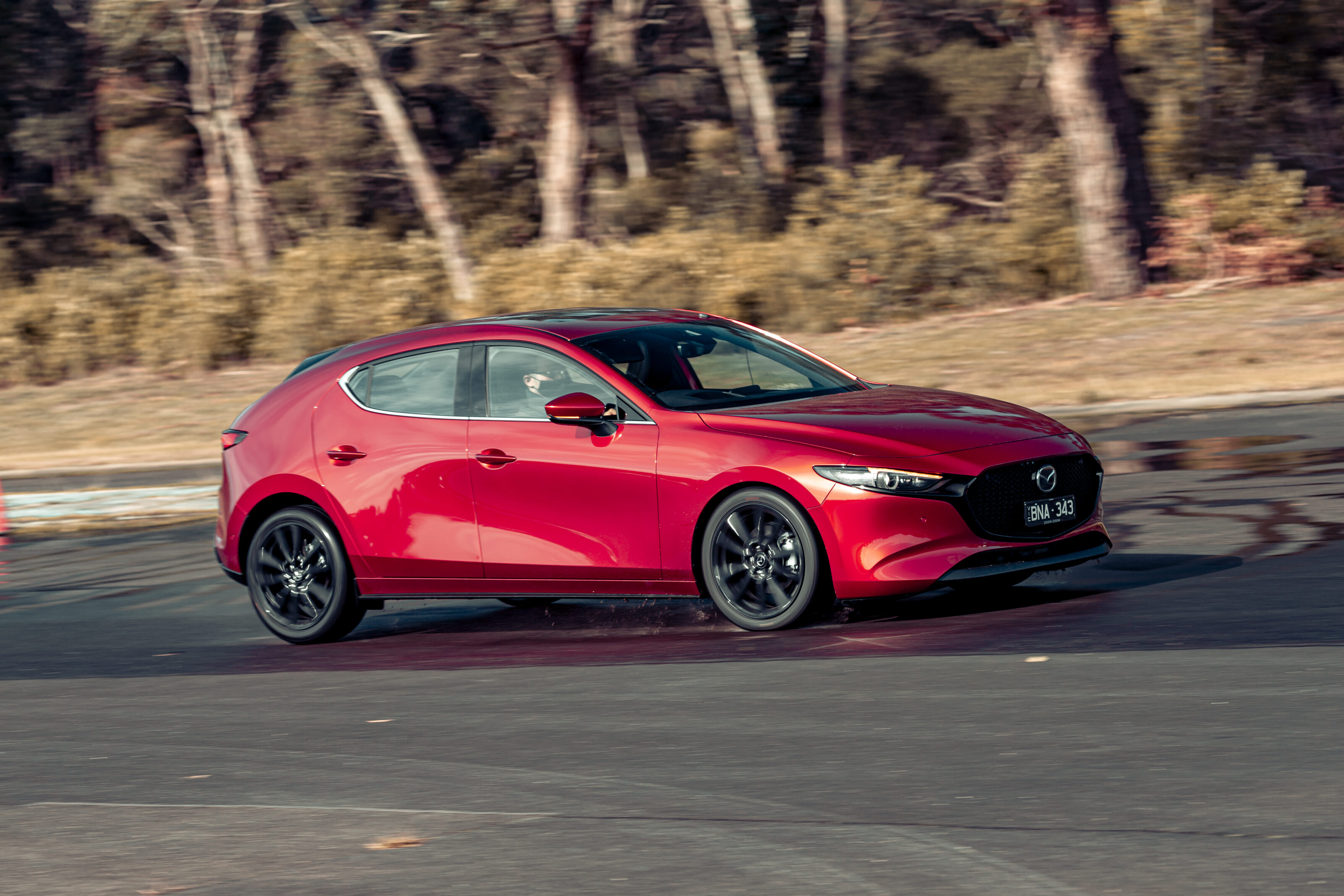
| When advice is outdated |
|---|
| Our braking data shows just how out of date Australiau2019s transport advice is. The commonly accepted figures available on state government websites is that u201ca modern vehicle with good brakes and tyresu201d will take 56m to stop in the dry and 80m in the wet.These figures do not take into account reaction time. While itu2019s undoubtedly important to factor in a comfortable safety margin, the governmentu2019s current figures are not in any way representative of the abilities of modern vehicles. |
Acceleration
Sometimes, the safest course of action is to get out of the way
While acceleration figures are not a safety factor per se, we took the opportunity to record 0-100km/h figures on all the vehicles. All vehicles were tested for the fastest possible time, whether that be a stationary transition from brake to wide-open throttle or stalling the car against the brakes to increase launch rpm.
Once again the star of the show was the Ford Escape, its 183kW/387Nm 2.0-litre turbo engine rocketing it to 60km/h in 3.49sec and 100km/h in just 7.15sec, despite the traction limitations of its front-wheel-drive layout.
The Focus Active’s gutsy 134kW/240Nm 1.5-litre turbo triple also punched above its weight, hitting 60km/h in a leisurely 4.57sec but improving to a second-best 9.01sec to 100km/h. Mazda’s 134kW/224Nm Skyactiv-X 3 was very sluggish, taking 5.08sec to reach 60km/h and 11.07sec to reach 100km/h, miles slower than its 8.7sec claim.
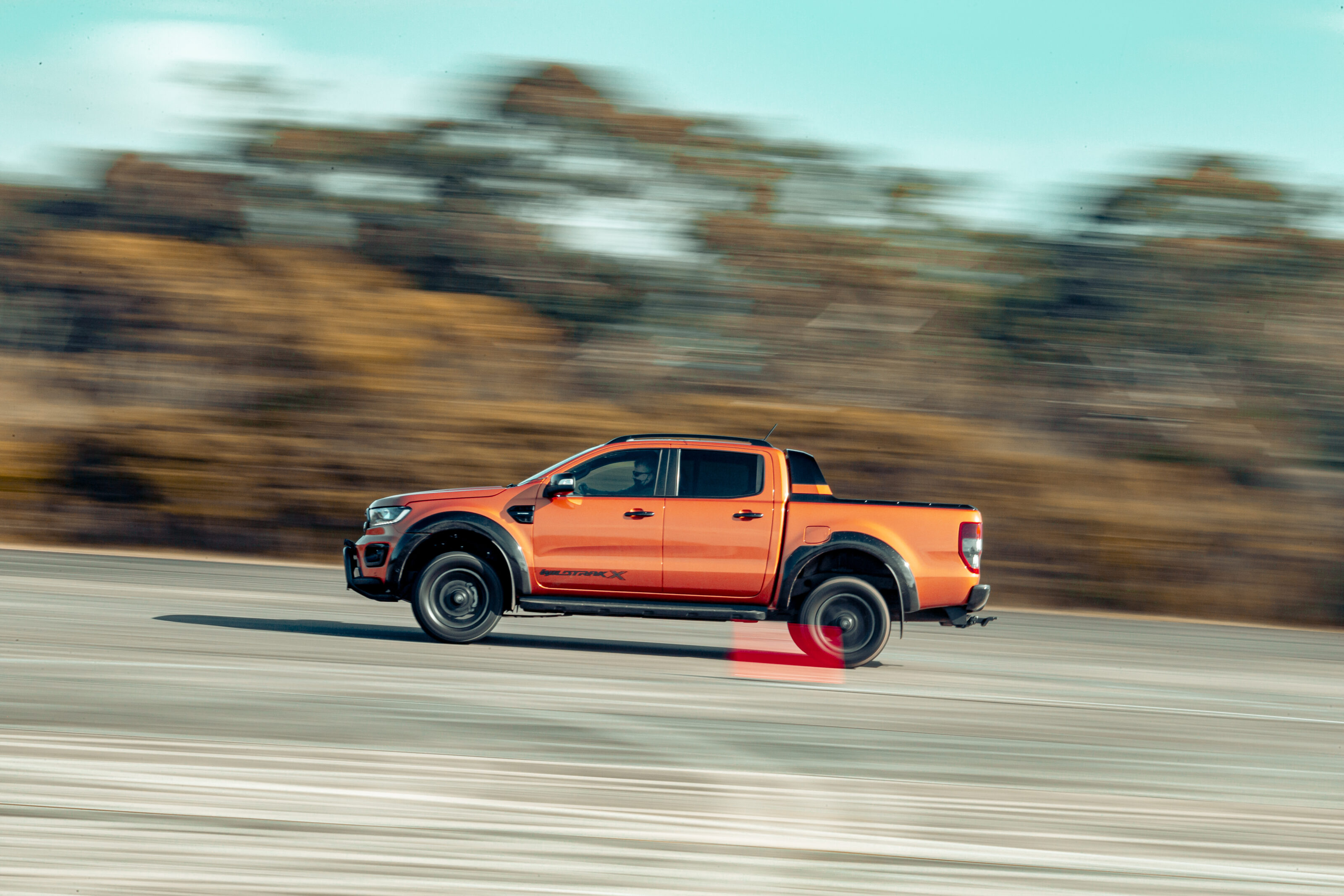
With identical power outputs (140kW/450Nm) and similar weight, it perhaps isn’t surprising that the other Mazdas recorded exactly the same time to 60km/h at 4.13sec, before the CX-8 opened up a six-tenths advantage to 100km/h, taking 9.4sec to the BT-50’s 10sec dead.
The Ford Ranger might have just a 2.0-litre diesel pushing 2330kg of ute but the 157kW/500Nm Ecoboost engine and 10-speed automatic combination is a potent one, taking 4.21sec to reach 60km/h but overtaking its BT-50 rival by 100km/h at 9.81sec.
No longer does choosing a dual-cab mean paying a performance penalty, though it must be said recent testing has revealed that the Ranger and BT-50 (along with its D-Max twin) are the straight-line stars of the segment. It’s also important to note that the Escape’s rabbit-like acceleration is atypical among mid-size SUVs.
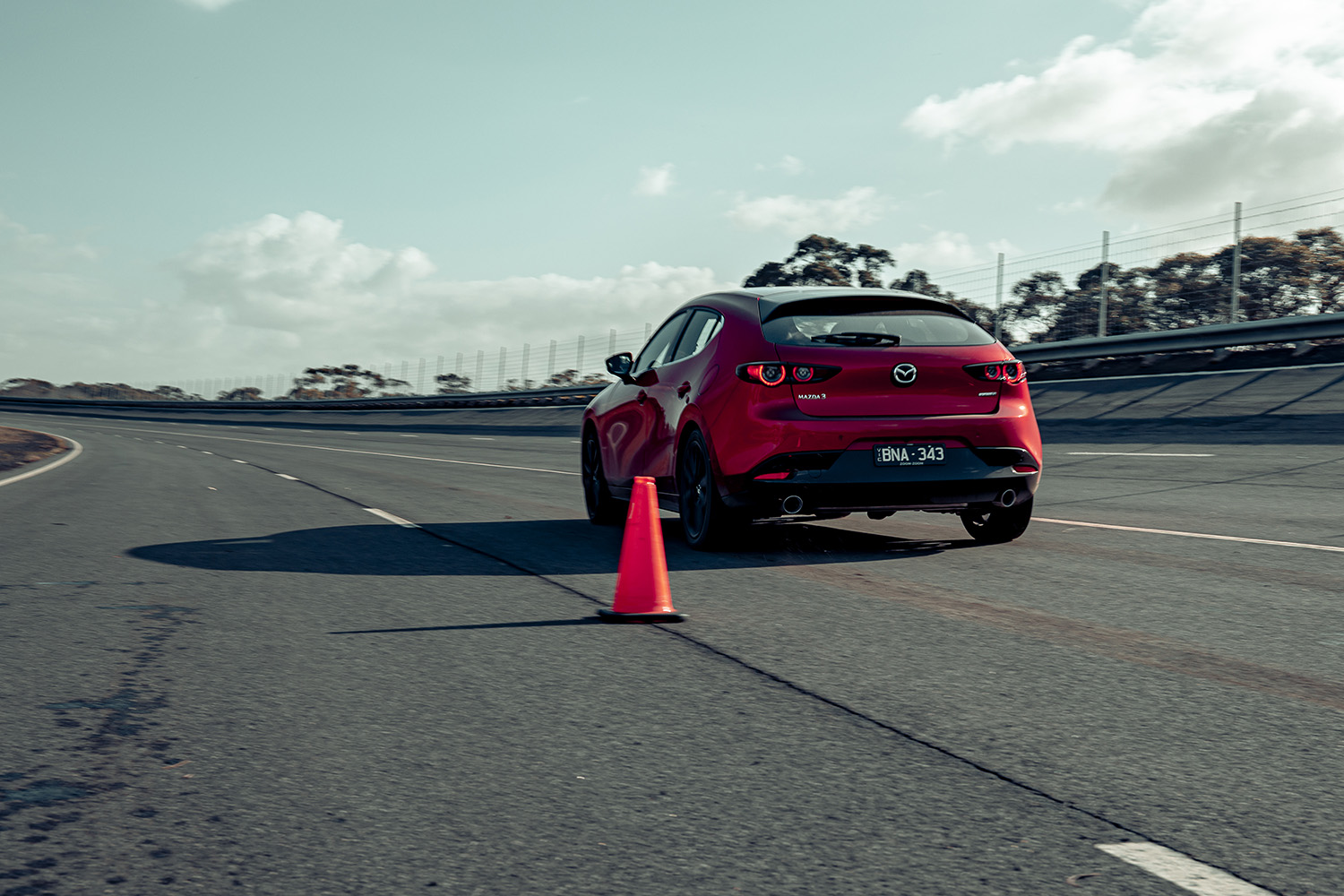
Max Grip
Exploring the outer limits of adhesion … and beyond
To assess each vehicle’s maximum lateral grip, an Oxford RT3200 inertial and GPS measurement system was rigidly installed at the approximate centre of gravity location to measure forward and lateral velocity, and lateral acceleration, corrected for roll angle. The test course was a ring of cones 60 metres in diameter laid out on Lang Lang’s concrete skid pad.
Speed was gradually increased until stability control (ESC) intervention occurred or the vehicle was unable to maintain the circular course. All runs were completed with ESC activated, though the dual-cabs were also tested with ESC disengaged due to the systems’ early intervention. Each vehicle was tested two-up and completed two runs in a clockwise and anti-clockwise direction for a total of four runs.
As one might expect of one of the best-handling small cars available, the Mazda 3 performed well with a maximum reading of 0.83g, the testing notes reading: “Subjectively felt the best of all vehicles due to low centre of gravity and the supportive seat giving more sporty feel. Ultimately limited by ESC intervention”.
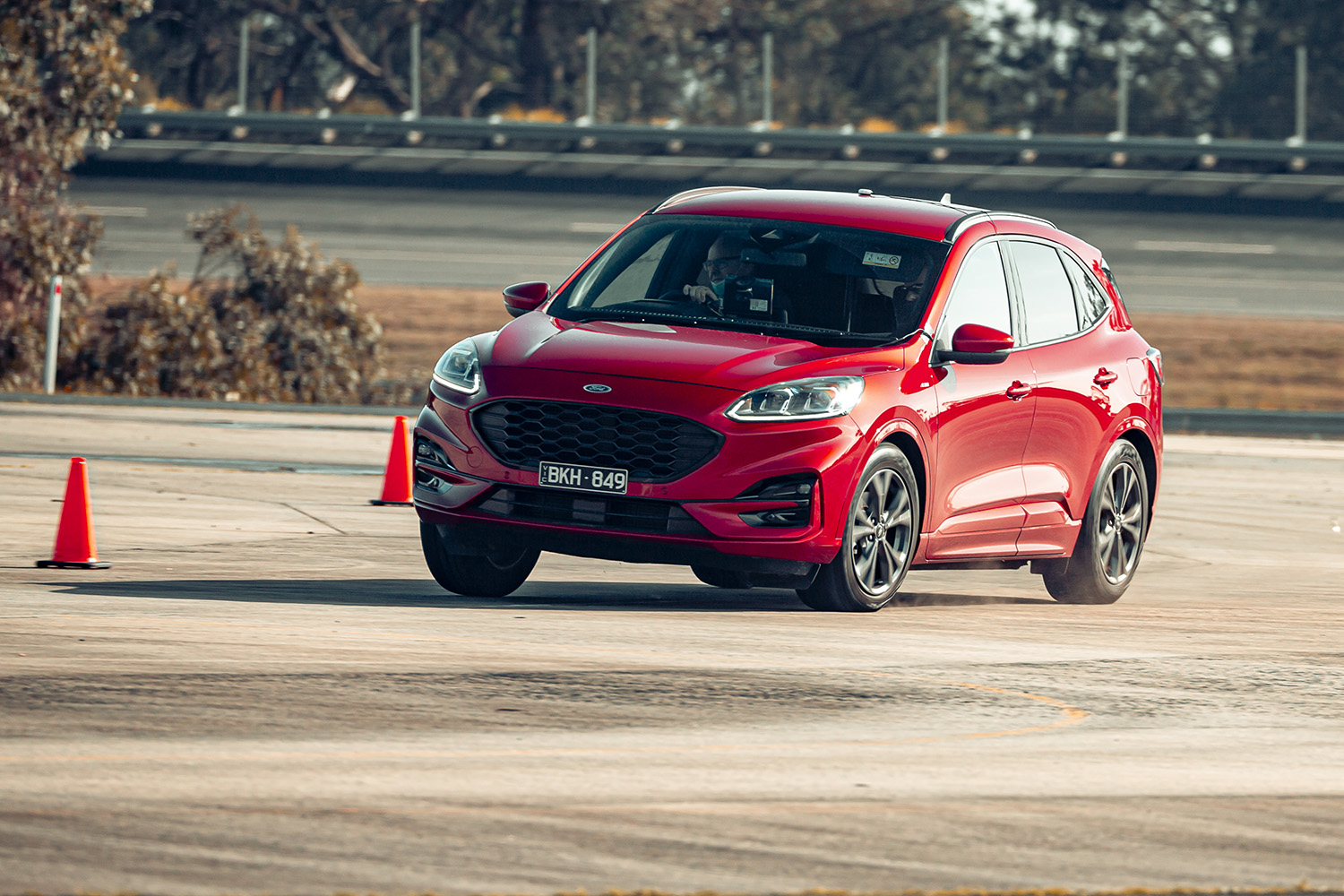
Belying its raised ride height, the Ford Focus Active scored even higher at 0.87g, the test notes explaining the Goodyear tyres felt the grippiest but its ultimate potential was again limited by ESC. Once again the Ford Escape defies the SUV reputation by splitting the two hatches with an impressive 0.85g reading, its steering “sharp and precise”.
The CX-8 was the only vehicle not limited by ESC intervention, its front tyres eventually washing wide into understeer at 0.78g. A look at the spec sheet reveals its Toyo Proxes are the same width as the Continentals on the Escape at 225mm, yet they are tasked with controlling almost 400 extra kilograms.
Both dual-cabs recorded very similar results, the Ford Ranger having a slight edge with ESC activated at 0.70g to the Mazda BT-50’s 0.68g. The testing notes for both utes describe greater roll, reduced steering response and very conservative ESC calibrations.
Repeating the test with ESC deactivated in the Ranger made very little difference due to roll-over mitigation remaining active and keeping the electronics alive, while relying purely on mechanical grip in the BT-50 increased its reading to 0.74g.
| What it means |
|---|
| Translating these lateral acceleration figures into speed reveals that while the Ford Focus could complete our circular u2018corneru2019 at 61km/h (0.87g), the best the BT-50 could manage (with its ESC activated) was 54km/h. That 7km/h deficit represents an 11 per cent drop on the speed achieved by the Focus. |
AEB
Distracted? here’s what to expect from autonomous intervention
Assessing autonomous emergency braking systems required a bit more science. Each vehicle was fitted with a GPS speed sensor and an impact trigger on the front bumper, then driven at a ‘Guided Soft Target’ (GST) on a constant throttle. The GST is a Ford Fiesta lookalike made from a number of foam blocks; the speed starts at 10km/h and builds in 5km/h increments to a maximum of 50km/h, which is the speed used by NCAP to evaluate AEB.
The good news is that all vehicles avoided the GST at all speeds up to and including 50km/h, however, the execution of the AEB systems varied quite dramatically between manufacturers, as did the distance-to-impact once each vehicle had come to a complete halt. All tests were conducted with the AEB sensitivity set to its middle setting as per NCAP protocols.
Class of the field was the Mazda 3. The closest it ever came to hitting the GST was 1.37m at 10km/h and it typically stopped more than two metres short of the target. In fact, the efficacy of the 3’s AEB is such that it easily avoided the GST even when the speed was increased to 55, 60 and 65km/h. The testing notes stated the following: “Very early forward collision warning with minor braking until a last-minute ABS stop – hard, consistent. Stopped furthest away for the target vehicle”.
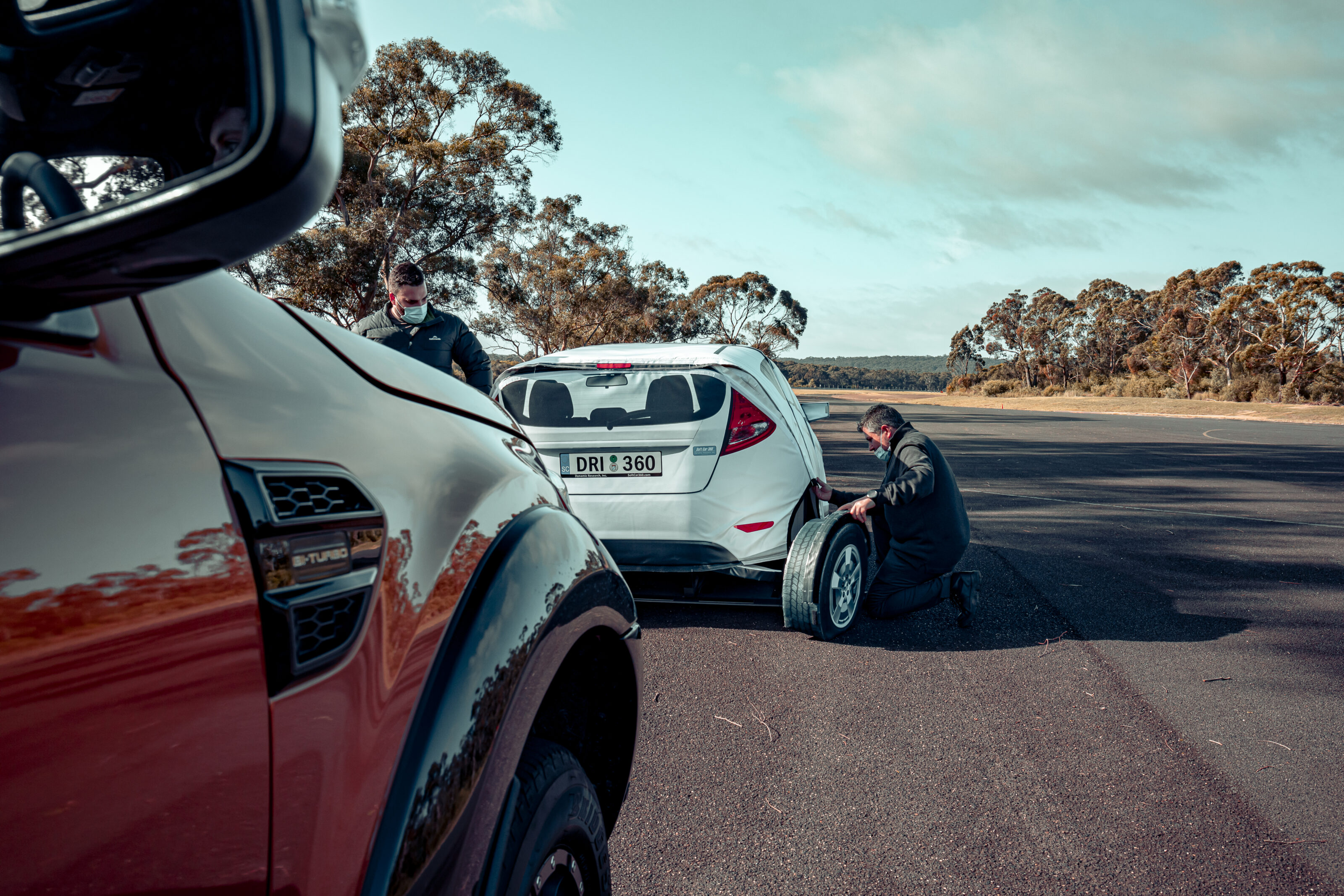
It was a similar story with the Mazda CX-8. While it cut things closer compared to the 3, getting within 0.58m of an impact at 35km/h, it also stopped short of the target at speeds up to 65km/h. The testing notes read: “Late braking and full ABS stop, stopped with large safety margin each time. Tested an additional point at 65km/h and stopped comfortably”.
The BT-50 performed well, stopping easily at all speeds up to 60km/h, though in the 65km/h test it impacted at 22km/h. Testing notes: “Late warning, firm braking into hard ABS stop, probably the harshest of the lot. Constantly had a ‘Front Camera Unavailable’ warning after every third test, requiring a key cycle to reset. With this fault AEB and lane support systems were unavailable”.
Switching to the Fords, the Escape ST-Line easily avoided the GST at all speeds up to 45km/h, though typically with only around half a metre to spare, a result of Ford’s AEB strategy, which we’ll get to shortly. From 50km/h it stopped just 6.5cm (0.065m) short of the target, from 55km/h it impacted at 2.5km/h and from 60km/h it collided at 19km/h. Nevertheless, the testing notes were complimentary: “Very smooth braking. The stop felt as if the brake was applied firmly by the driver, not an emergency intervention, [with] no suspension recoil during the stop”.
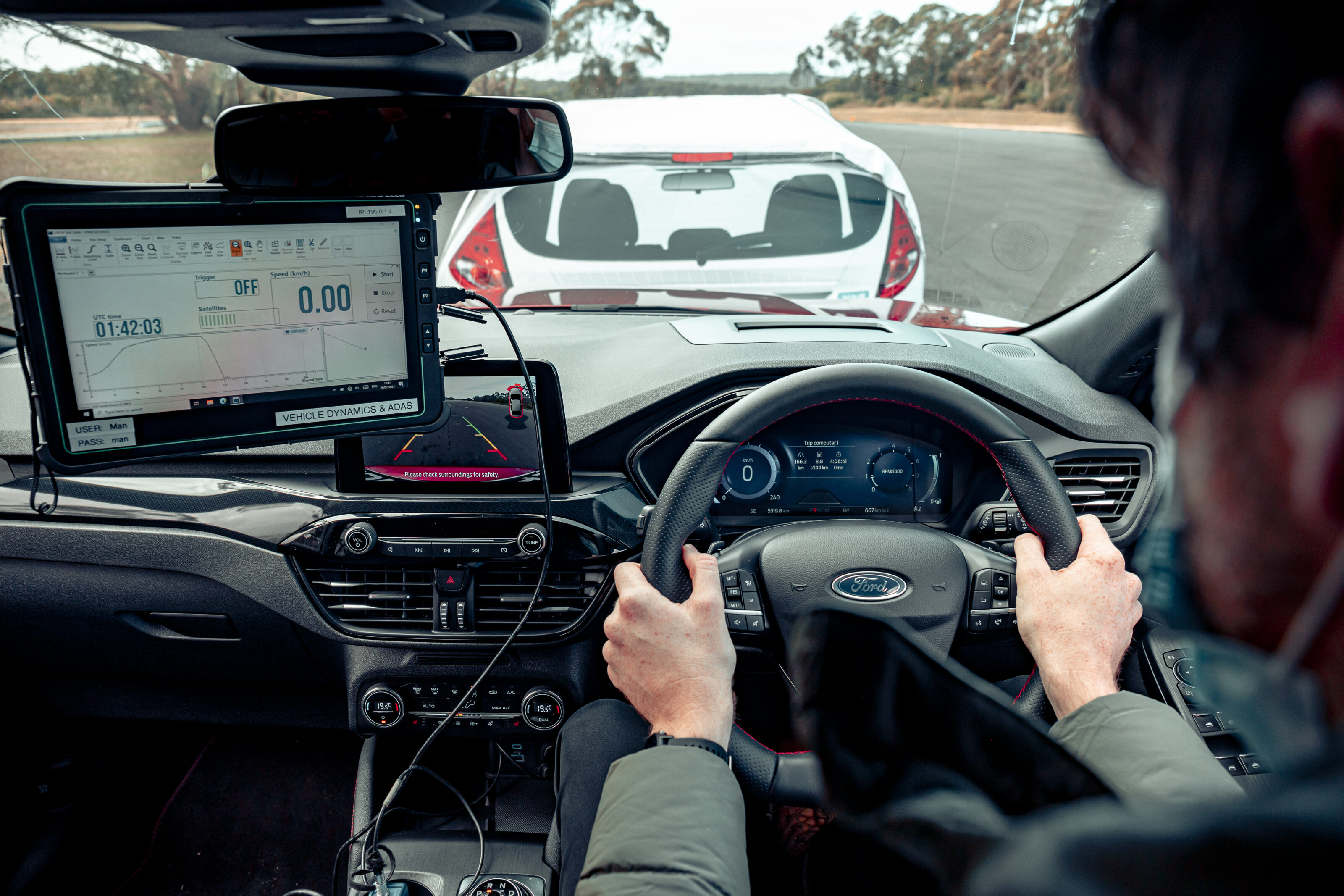
The Focus Active performed similarly, in general stopping around half a metre shy of the target at all speeds up to 50km/h, though from 55km/h it impacted at 8.2km/h and from 60km/h closing speed was 18.7km/h. Testing notes: “Smooth braking. Not quite as smooth as the Escape but still very good. Hard braking at start before lifting and a solid stop – a standard Ford strategy it seems”.
At speeds of up to 50km/h the Ranger likewise stopped well short of the GST, but beyond the NCAP threshold it impacted at 14.1km/h from 55km/h and a hefty 28km/h from 60km/h, scattering the various pieces of the foam Fiesta in all directions.
It’s pleasing that all vehicles stopped safely at all speeds up to and including the 50km/h dictated by NCAP, though credit to Mazda for having an AEB system that works effectively at speeds well beyond that. There is more to the story, however, which can be explained by the testing notes.
“All Ford vehicles applied a noticeable brake pulse together with the Forward Collision Warning to warn the driver of an impending condition. The brakes would then release and re-apply for full AEB braking to avoid the target. In a real-world situation, we’d expect the driver to react to the initial warning, apply the brakes and hopefully avoid the target without the need for AEB intervention, especially at higher speeds”.
In contrast, “The Mazda vehicles were able to identify the target vehicle and apply AEB braking as late as possible to avoid the target (single brake application)”.
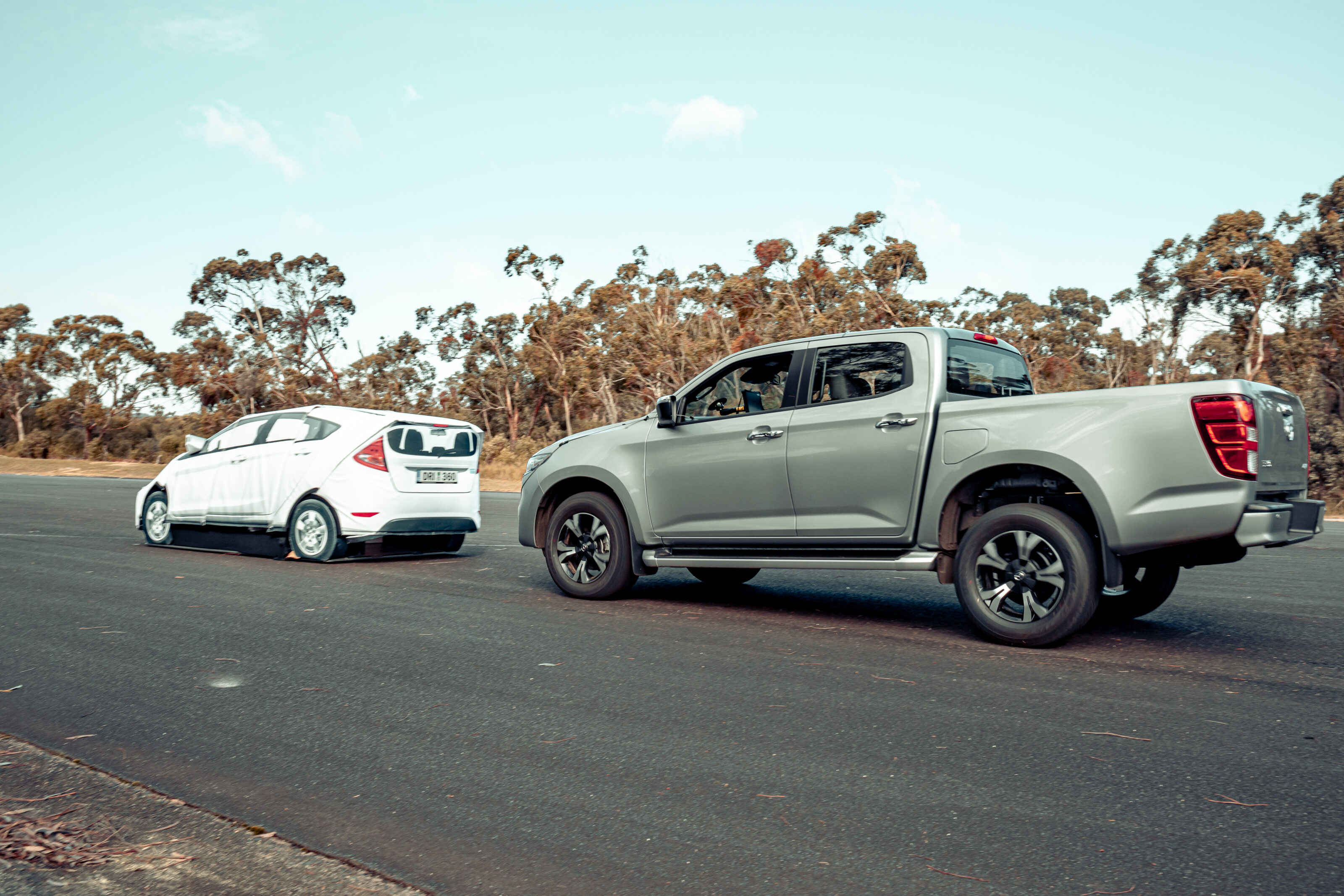
| Two AEB philosophies |
|---|
| What was evident from our AEB testing, more than just stopping distances of the different vehicle types, is that there are different approaches at work.To summarise, Fordu2019s system warns the driver earlier and gives them a chance to avoid a collision, which led to smaller distances-to-impact when relying on the system alone.Mazda treats AEB intervention as an emergency response and, though it reacts later, conducts an emergency stop to ensure an accident is avoided. |
Moose Test
Swerve! Recover! Avoid! Which has the advantage when a collision is no option?
Our final test is the most difficult for virtually any vehicle, the double-lane change manoeuvre colloquially known as the ‘Moose test’ due to it simulating an antlered animal avoidance scenario. Its official international designation is ISO 3888, which outlines the precise dimensions of the course.
Each vehicle must enter the course through a coned ‘gate’, turn hard left to negotiate a second gate, then turn hard right to negotiate a third gate. The driver lifts the throttle two metres after entering the first gate, the entry speed increasing until the course can no longer be successfully negotiated.
As with the lateral g test, the hatches were the standouts, the Mazda 3 recording a maximum entry speed of 78km/h and the Ford Focus 79km/h. While the figures were extremely similar, the subjective experience differed markedly, as the testing notes explain:
“The Mazda 3 performed very well, responsive and very easy to control with refined ESC performance that complemented the dynamics of the vehicle and not too intrusive. The vehicle response is direct, linear and the vehicle feels connected to the road. The Mazda 3 felt the most confident through the course even though it did not achieve the highest entry speed.
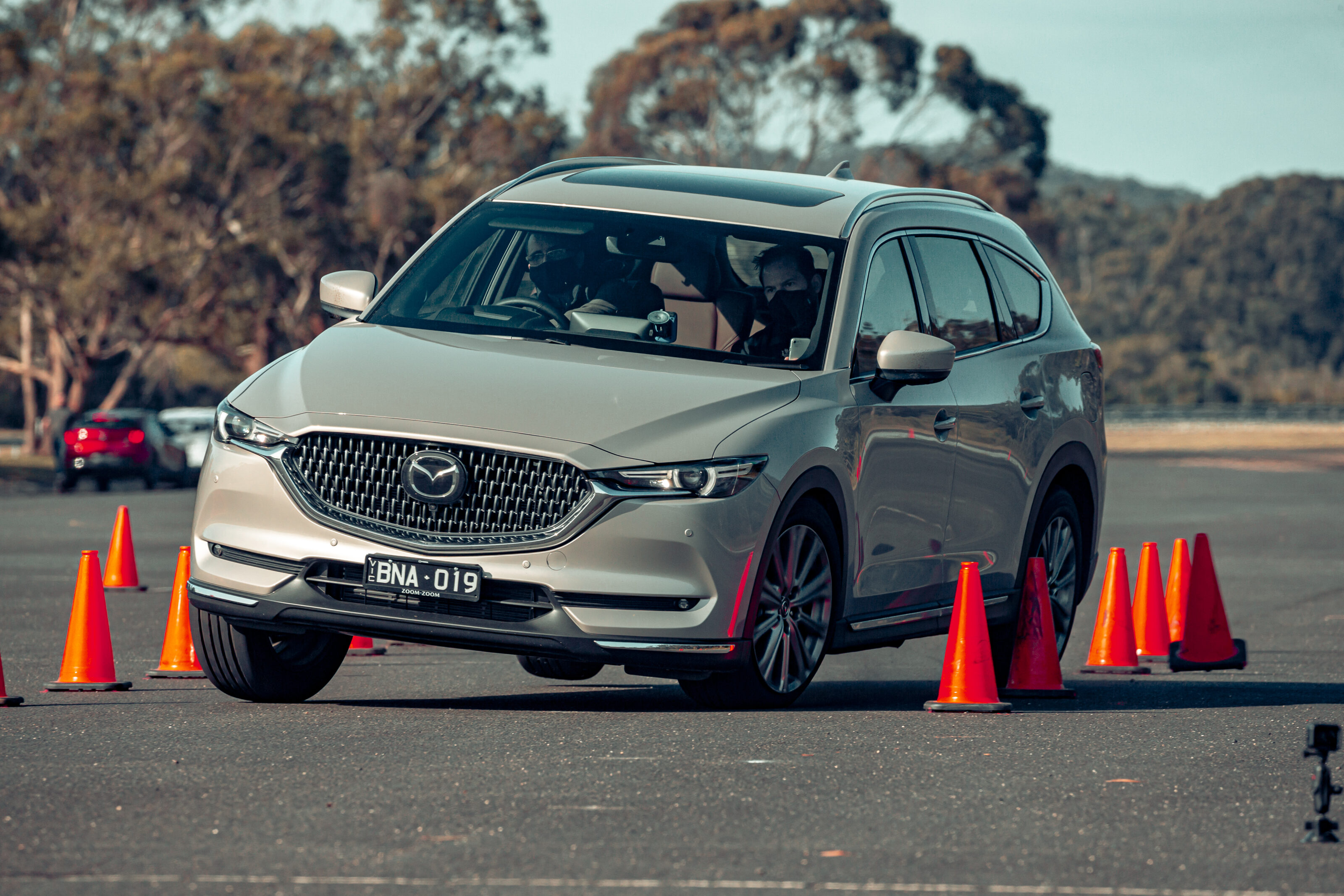
“The Focus is very responsive to driver inputs and needs to be nursed through the course to achieve a high entry speed when compared to the Mazda 3. Vehicle stability during an evasive manoeuvre is less forgiving than the Mazda 3 due to its related ESC control, however, its responsiveness and agility meant that it achieved the highest entry speed, but it did require more controlled inputs”.
Even the high-performing Escape can’t, err, escape physics in such a demanding test, though its 75km/h maximum was still impressive for a higher-riding vehicle. According to the testing notes: “Escape is responsive to driver inputs, however, the strong roll-over mitigation limits the steerability of the vehicle, although it benefits this type of evasive manoeuvre as it slows the vehicle right down and makes it easier to negotiate the course due to the resultant speed reduction”.
The CX-8 was visually the most dramatic, the combination of its size, response and ESC calibration making tester Tony Metaxas work hard at the wheel at its 73km/h maximum. Testing notes: “The CX-8 is a very agile vehicle and borderline too responsive to a step steer input with a tendency to rush away. It needs to be nursed through the course compared to the Mazda 3 with noticeable oversteer on turn-in. ESC interventions are late; would benefit from earlier control to aid stability”.
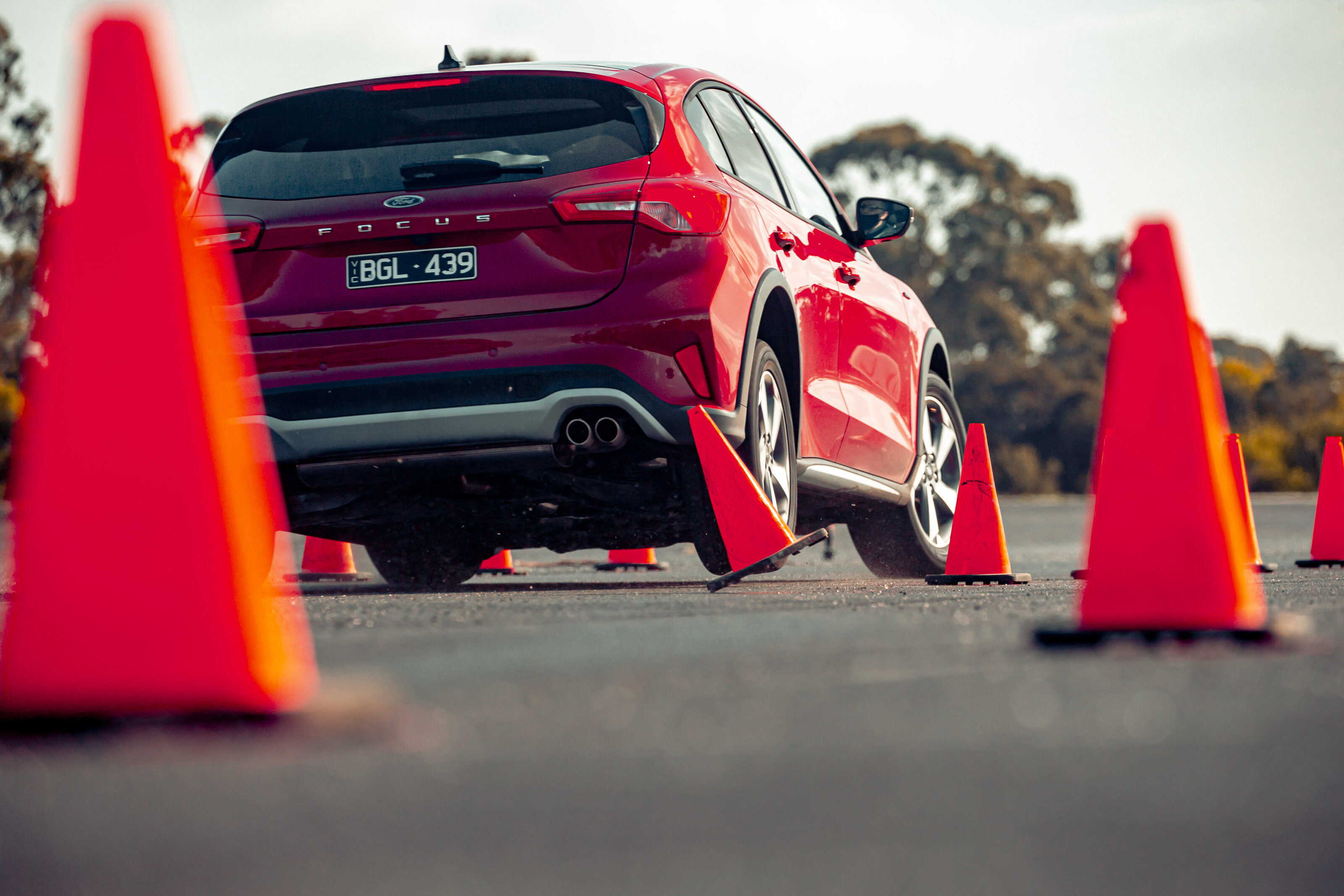
Unsurprisingly, the moose test proved a stern challenge for the heavy, high-riding dual-cabs, the Ranger managing a maximum of 69km/h, a single km/h more than the BT-50. The testing notes explain the difficulties: “The BT-50 is somewhat cumbersome, requiring a lot of effort to negotiate the course.
“It’s more difficult to control than the smaller vehicles with the high-profile H/T tyres introducing a delayed response. You need to turn prior to the marker so that the vehicle has enough time to set and respond to the steering input. Steering effort is high and it could do with more ESC support to negotiate the course”.
The Ranger was a “similar result to the BT-50 when negotiating the test, more challenging to negotiate the course than the smaller vehicles (as expected). You need to judge your turn-in point early to allow the vehicle to set and respond to your input. ESC and roll-over mitigation are more noticeable and intrusive than the BT-50, however, it is not excessive for this type of manoeuvre and helps the Ranger feel more in control”.
| Wide receiver |
|---|
| The only modification made to the course was that ISO 3888 technically dictates that the width of gate 1 should be u20181.1 x vehicle width + 0.25mu2019 and gate 2 should be u2018vehicle width + 1mu2019, however, given the dimensional similarities of the assembled vehicles the gate width was set using the widest vehicle and remained static for all tests.While this made the task of the smaller vehicles slightly easier, the difference in gate width would have been less than 10cm between the narrowest and widest vehicle; a negligible margin. |
THE WRAP-UP
Drive to the conditions, yes … but also to your vehicle’s limitations
In many respects, the data gathered by the Vinfast team held few surprises. In terms of a general trend, the standard hatchbacks performed best, followed by the SUVs and then the dual-cabs. However, rather than simply identifying whether there was a difference, these tests were designed to clarify the size of those differences. To that end, we need to look at the grey rather than the simple black and white.
A key takeaway is that the Ford Escape ST-Line’s impressive showing is evidence that modern SUVs aren’t necessarily dynamically inferior to regular hatchbacks. Aside from its genre-busting power and acceleration, the Escape’s braking – wet and dry – and outright grip were every bit the equal of the Mazda 3 and Ford Focus, while also trailing by only the smallest of margins in the difficult moose test.
Even with the CX-8’s unusual dimensions – as a stretched CX-5 it’s tall and narrow-tracked with skinny tyres in comparison to Mazda’s full-size CX-9 seven-seater – it still brakes well, though its compromises became apparent in emergency situations. Its ESC calibration, in particular, responded slowly to oversteer in the moose test and not at all to understeer in the lateral g test.
It’s also clear that while dual-cab utes have come a long way in terms of performance, dynamics and passive and active safety, they are still heavily compromised as on-road vehicles. As mentioned, that in itself isn’t particularly surprising, but the key message here is one of awareness. If you, like many Australians, have chosen a dual-cab as your primary family transport, then this data graphically shows that driving habits need to adjust accordingly.
For example, compared to a Focus Active, a Ranger Wildtrak takes an 11 per cent greater distance to stop in the dry, 22 per cent greater distance to stop in the wet, has 20 per cent less lateral grip and its maximum evasive manoeuvre speed is 14.5 per cent lower. In an emergency situation, these figures could be the difference between a serious accident and avoiding one completely.
As stated at the outset, this isn’t about encouraging or discouraging consumers to buy certain types of vehicles, but just as the Australian motoring landscape has changed dramatically in the last two decades, it’s important that public awareness and driving habits follow suit.


